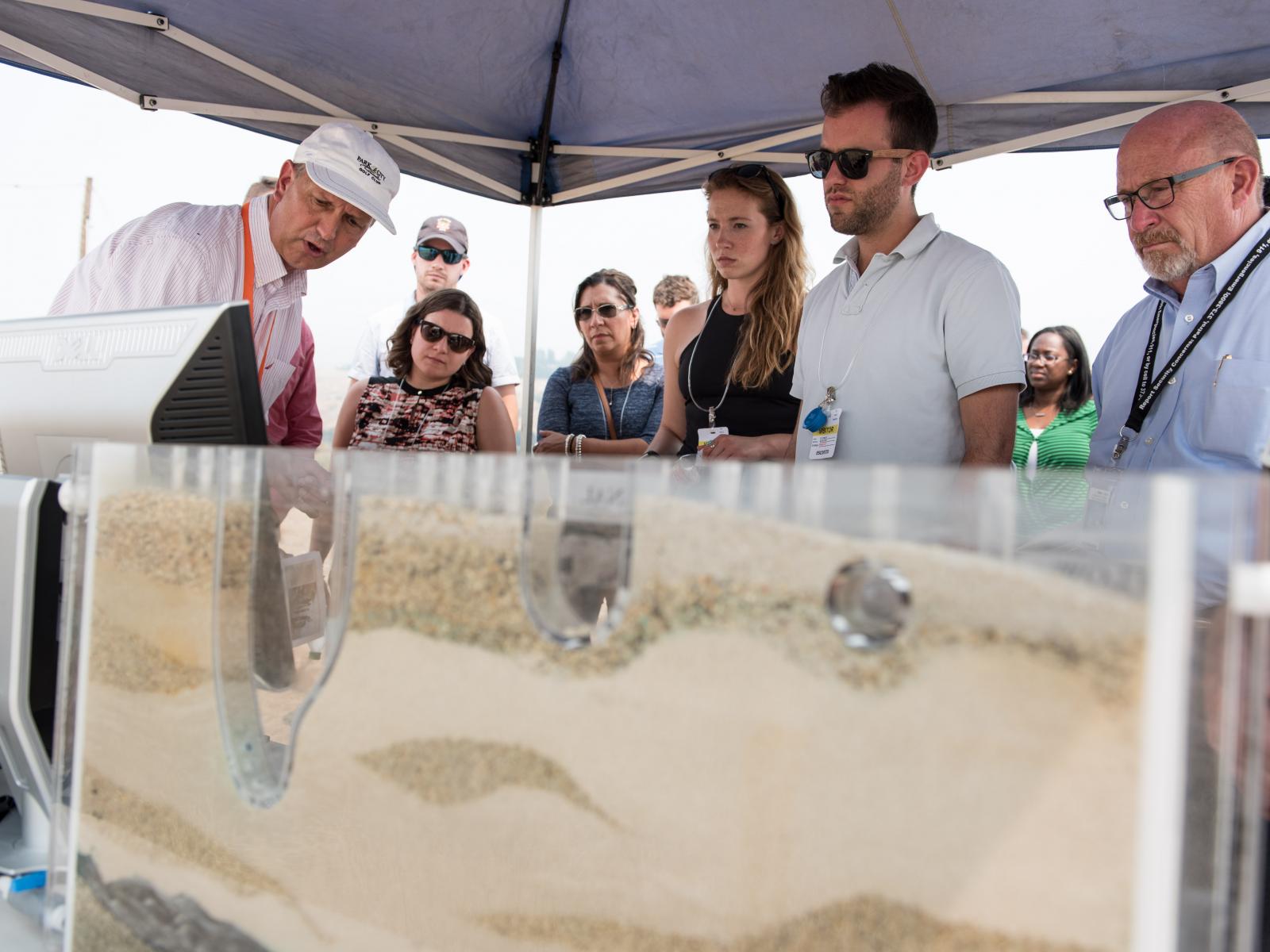Environmental Subsurface Science

TRIDEC hosted an annual tour for congressional staffers from the offices of Murray, Cantwell, Newhouse, Herrera Beutler, McMorris-Rodgers, and Smith.
Andrea Starr | Pacific Northwest National Laboratory
The environmental subsurface science capability focuses on developing and applying knowledge of fundamental biogeochemical reactions, energy, and mass transfer processes to the prediction and assessment of natural processes, including the natural attenuation of contaminant plumes and engineered systems. We provide domain expertise in scale biogeochemistry, reactive transport modeling, lab-to-field-scale geohydrology, multiphase flow modeling, computational geochemistry, subsurface technology development and deployment, advanced geophysical monitoring, isotopic analytical capabilities, and high-temperature and high-pressure geochemistry.
Potential applications include enhanced oil recovery, geologic carbon storage, geothermal energy development, and technology development for deep borehole nuclear waste repositories.
We apply an integrated experimental and modeling approach to resolve technical issues necessary to inform decisions for environmental remediation, waste management, and closure. We have teamed with other laboratories to develop an advanced scientific approach that uses integrated toolsets for understanding and predicting contaminant fate and transport in natural and engineered systems. We provide the technical basis for quantifying, mitigating, and monitoring natural and post-remediation contaminant discharge from the vadose zone to groundwater. Outcomes include advanced prediction, characterization, remediation, and monitoring approaches for addressing residual soil and groundwater contamination, as well as the protection of regional water resources and aquatic ecosystems.
We have become a national leader in geologic sequestration science by applying this capability to numerous energy and water challenges, including sustainable energy generation, production, and use. We led one of the world’s first carbon storage projects into basalt formations. We are leading research in molecular and microscopic electron transfer processes, pore-scale reactive transport and upscaling, and field-scale microbial ecology and biogeochemistry.
Our unique research facilities in this area include the Environmental Molecular Sciences Laboratory and the Marine and Coastal Research Laboratory.
Environmental subsurface science programs are managed for the Department of Energy’s Offices of Biological and Environmental Research, Basic Energy Sciences, Environmental Management, Fossil Energy, and Energy Efficiency and Renewable Energy (Geothermal Technologies Office). Our environmental subsurface science capability is also used for the Department of Energy’s emerging integrated program in Subsurface Technology and Engineering Research, Development, and Demonstration Crosscut. Sponsors also include the Nuclear Regulatory Commission, National Nuclear Security Administration, the Department of Homeland Security, the Environmental Protection Agency, the National Aeronautics and Space Administration, and the Department of Defense.